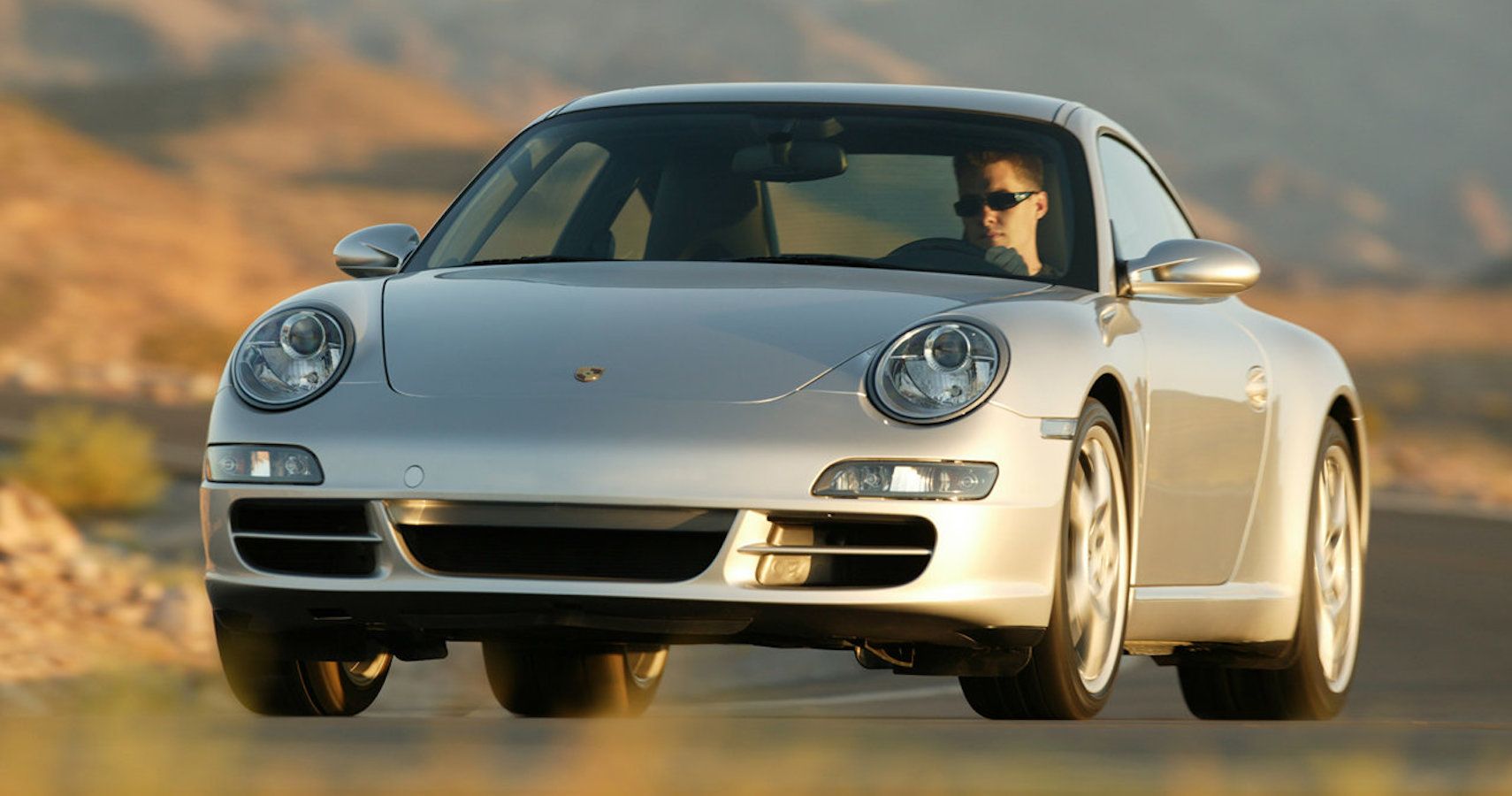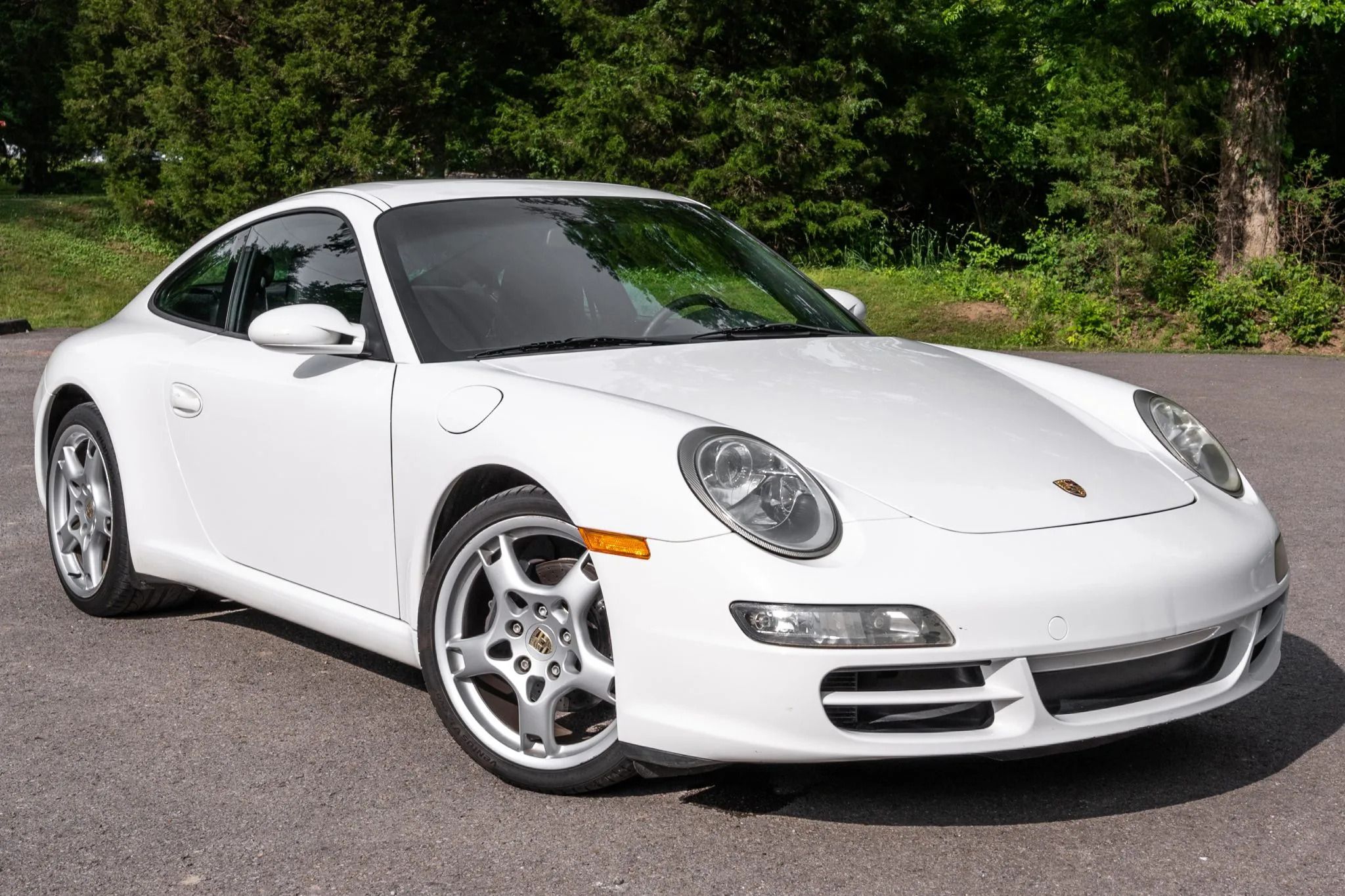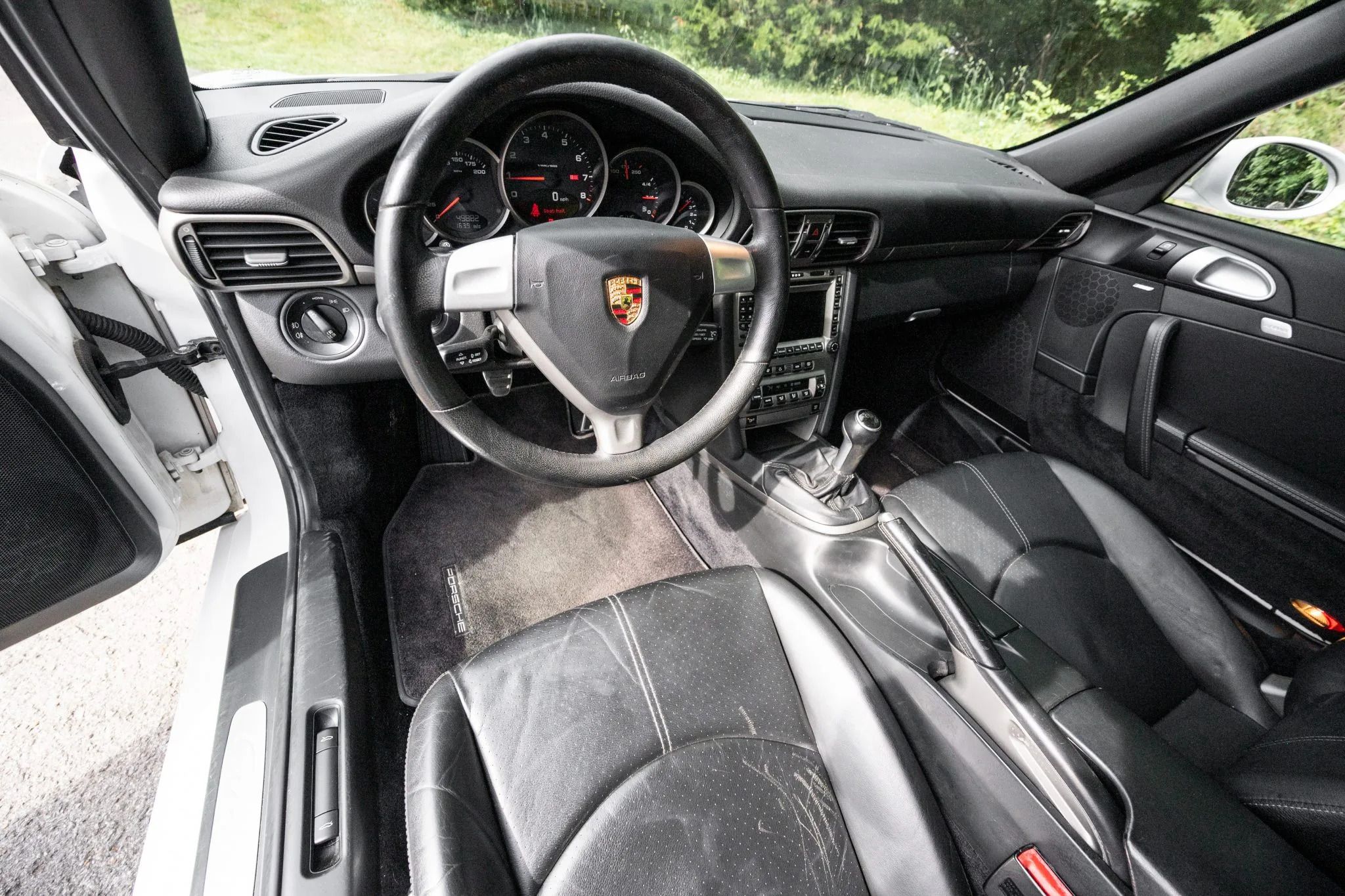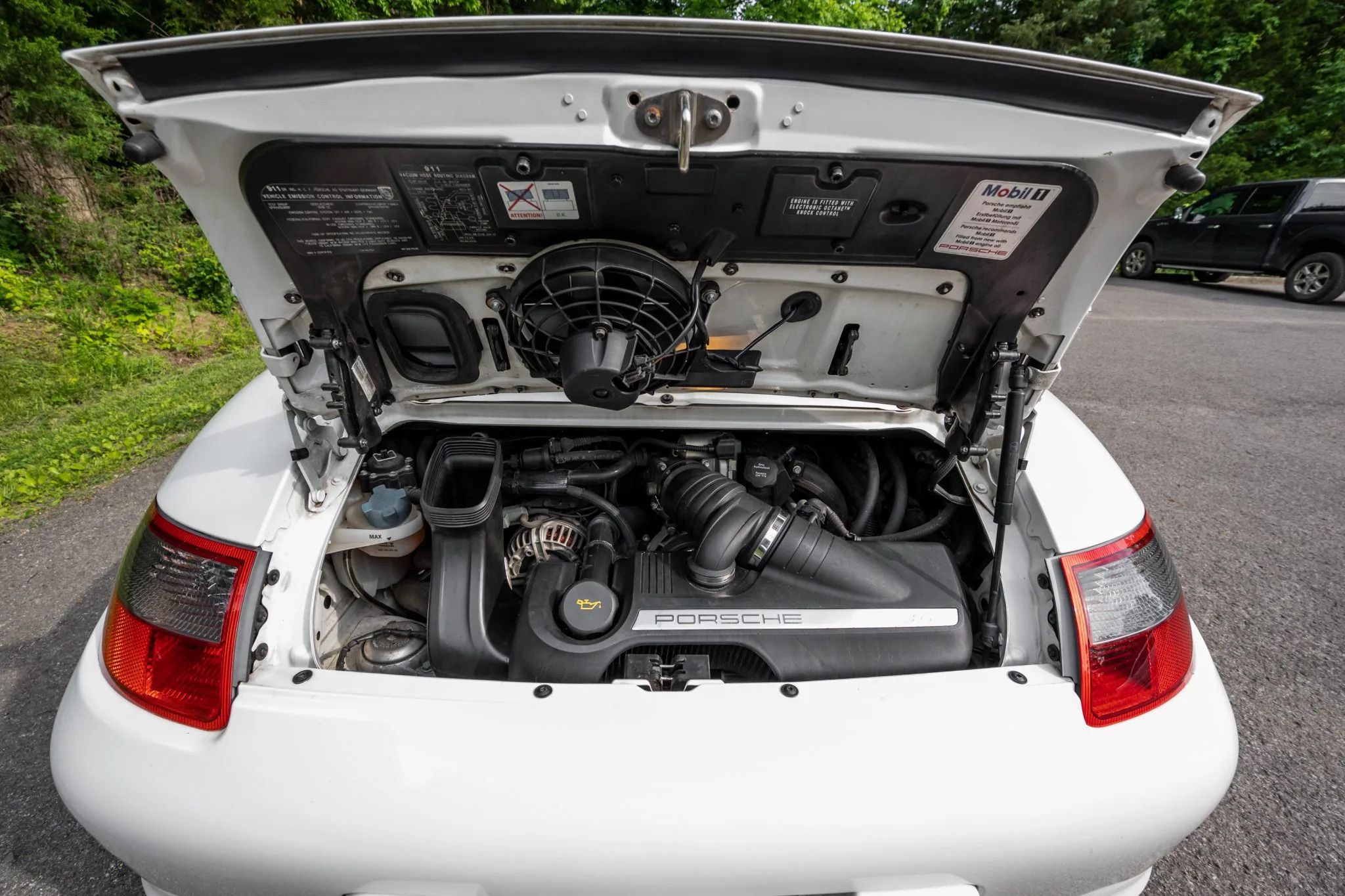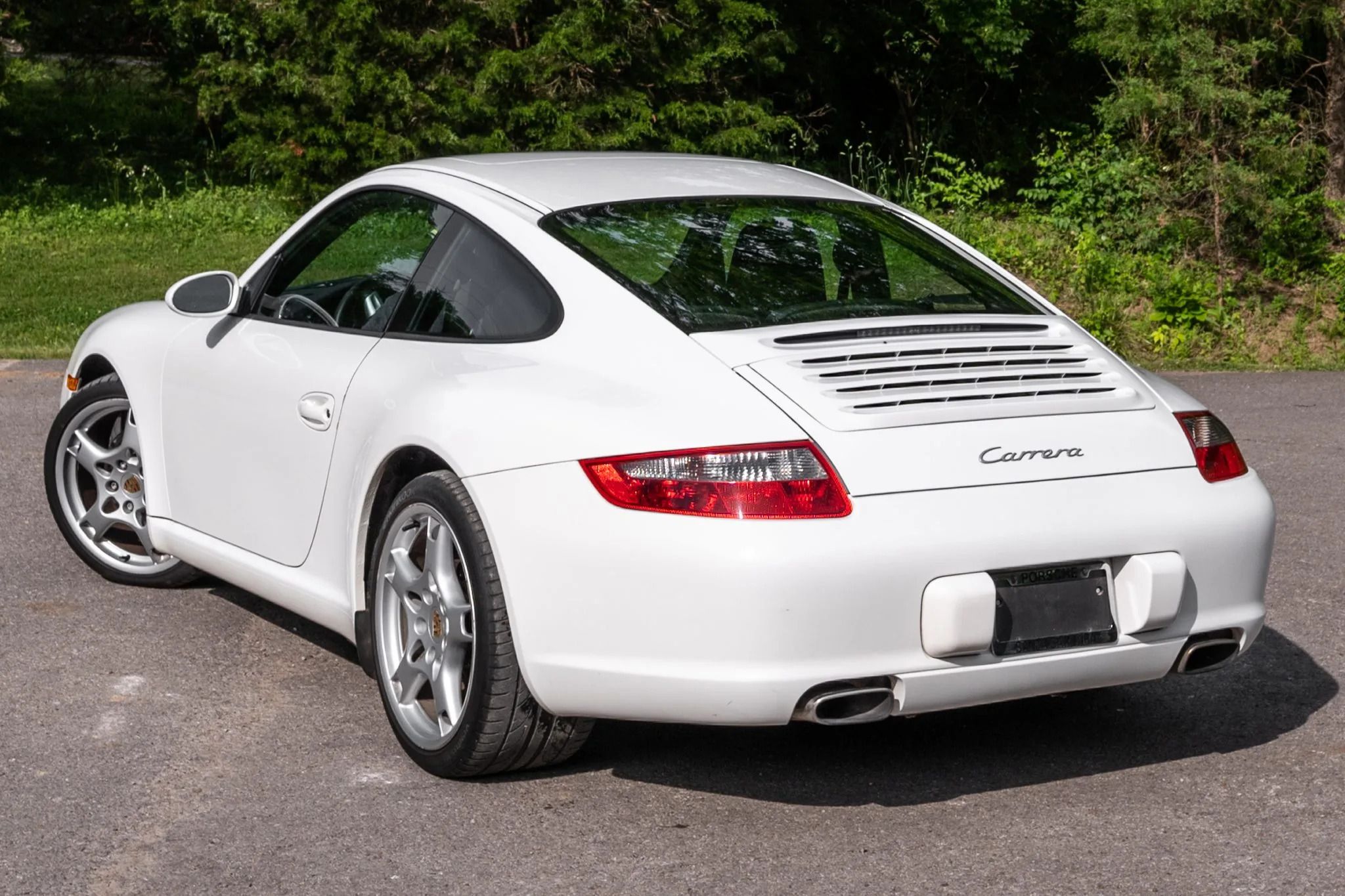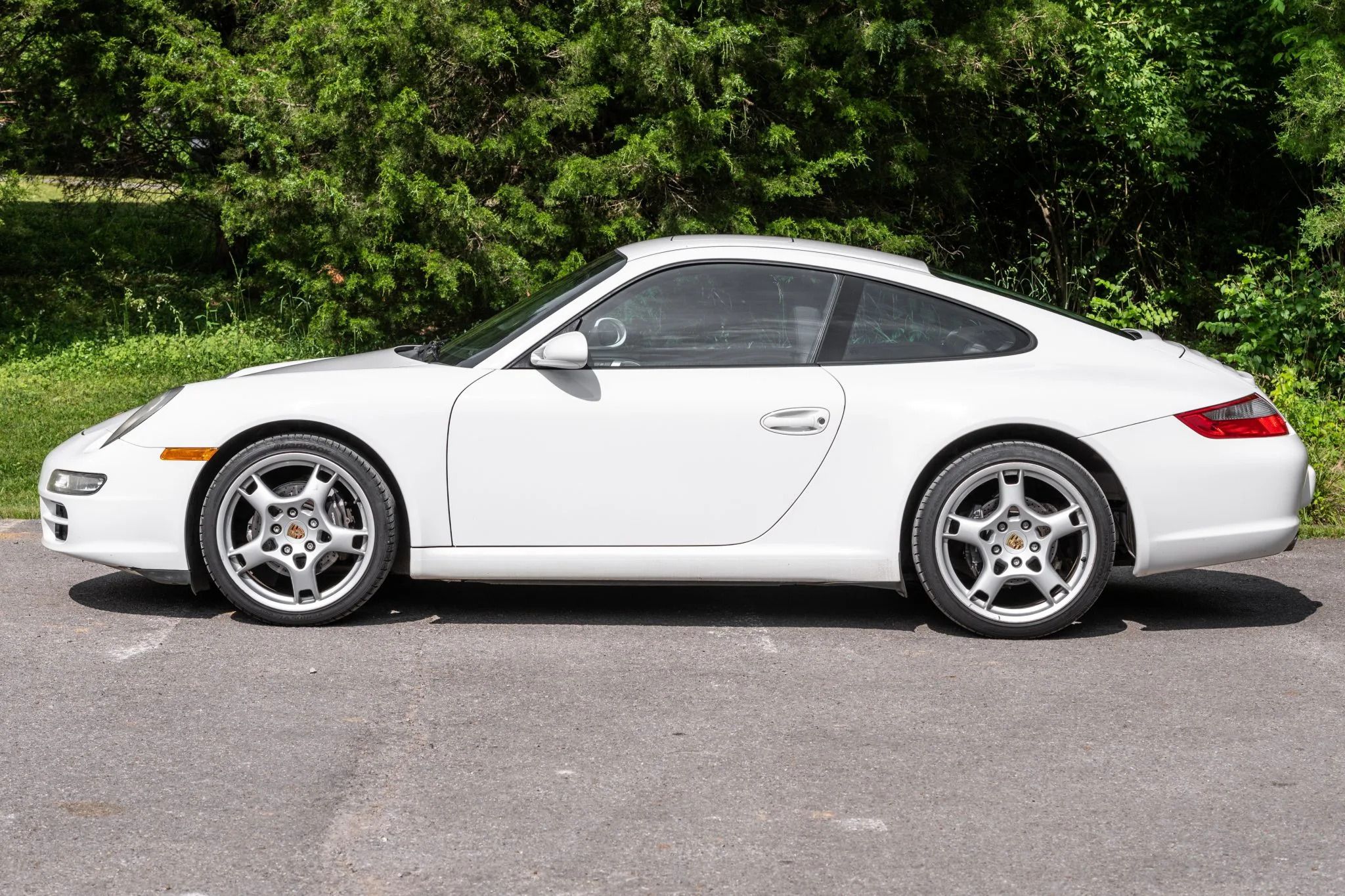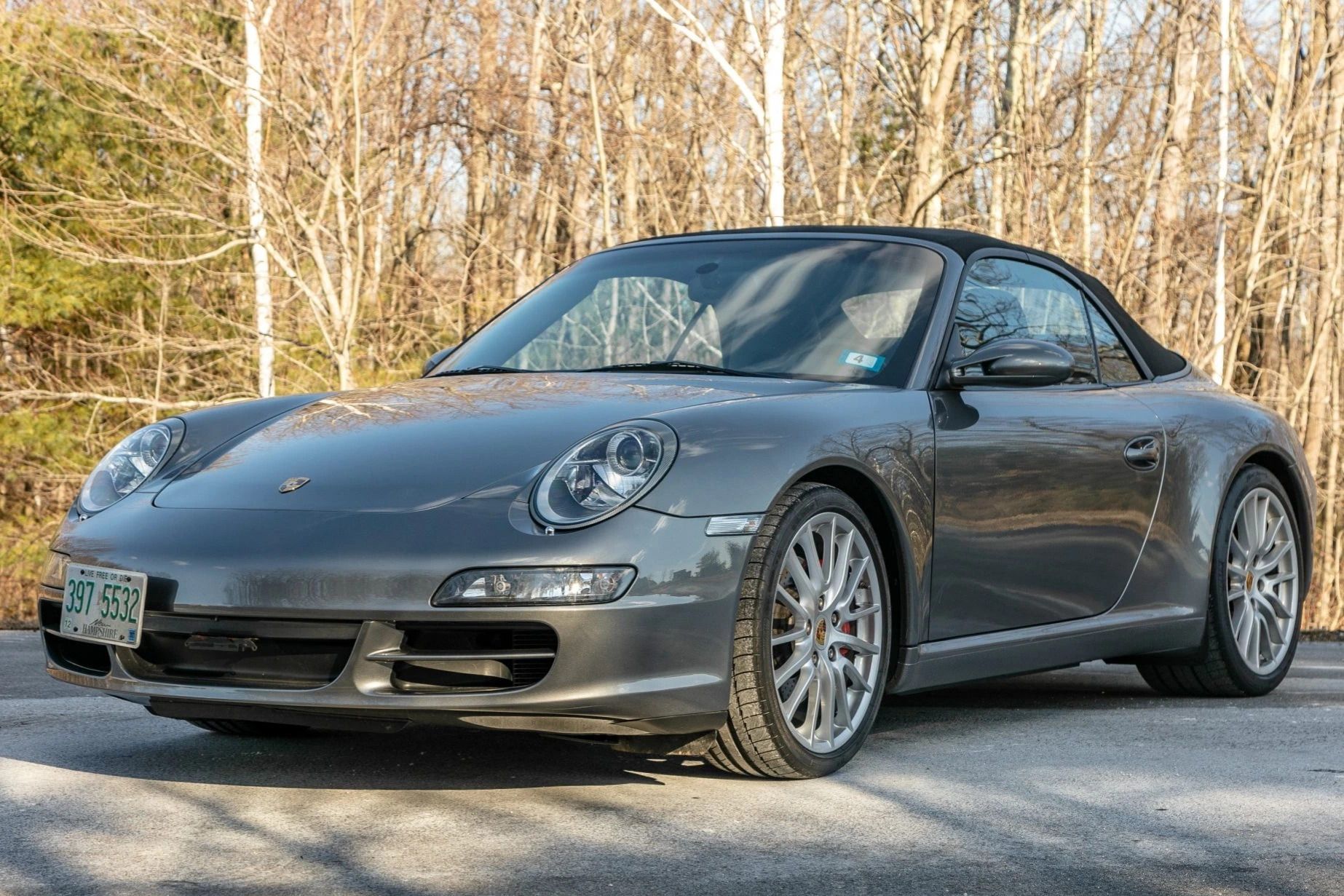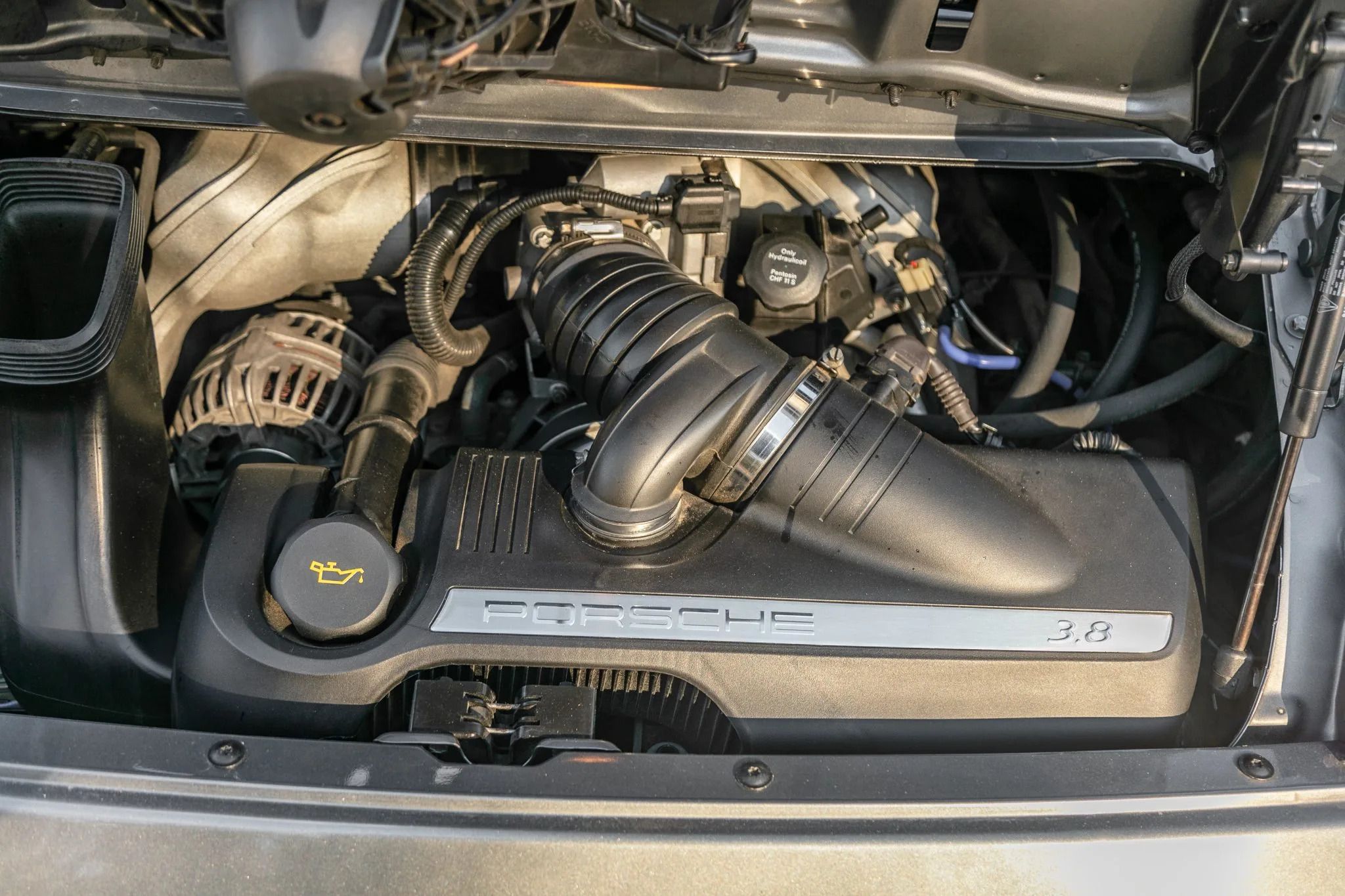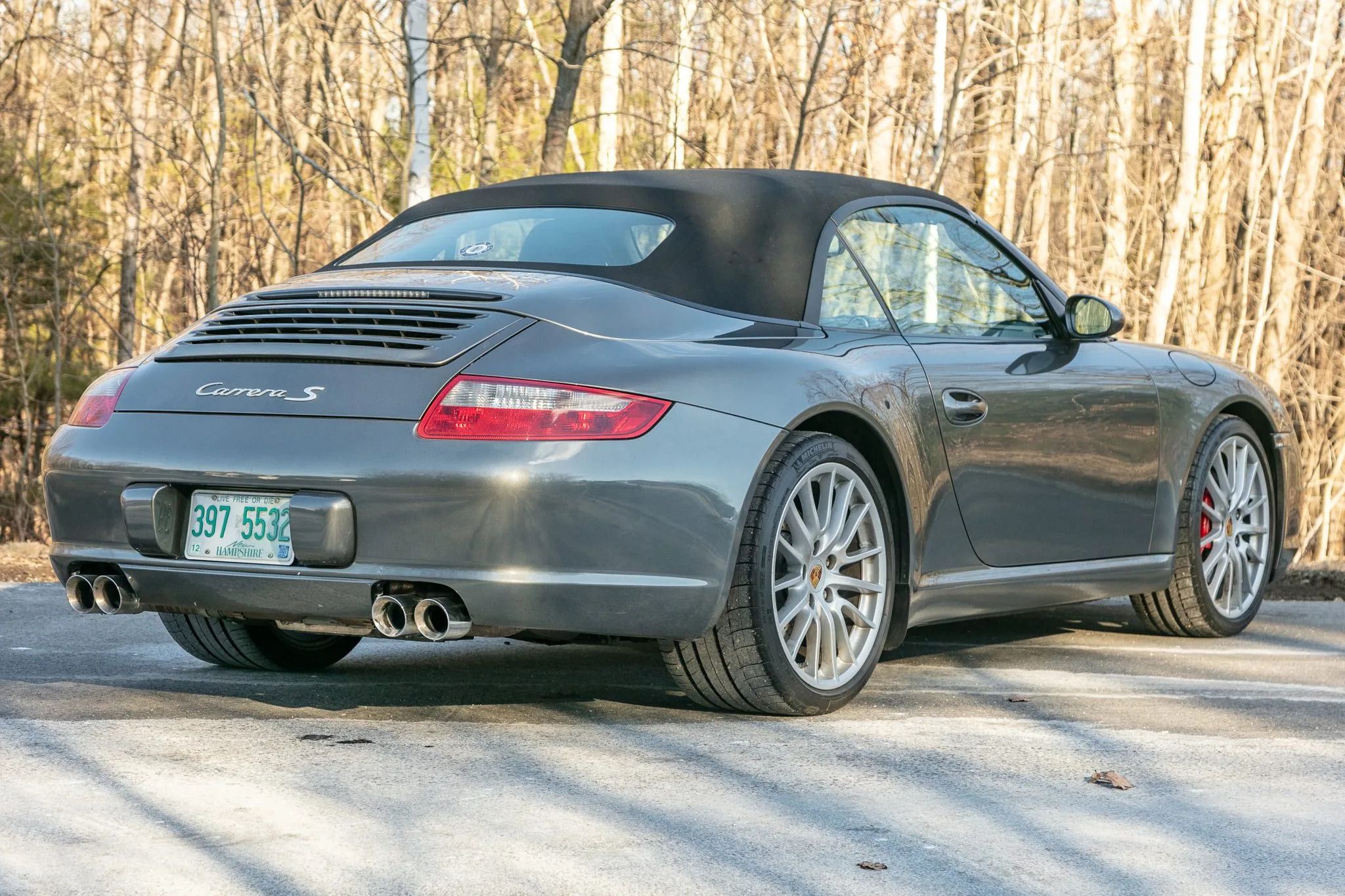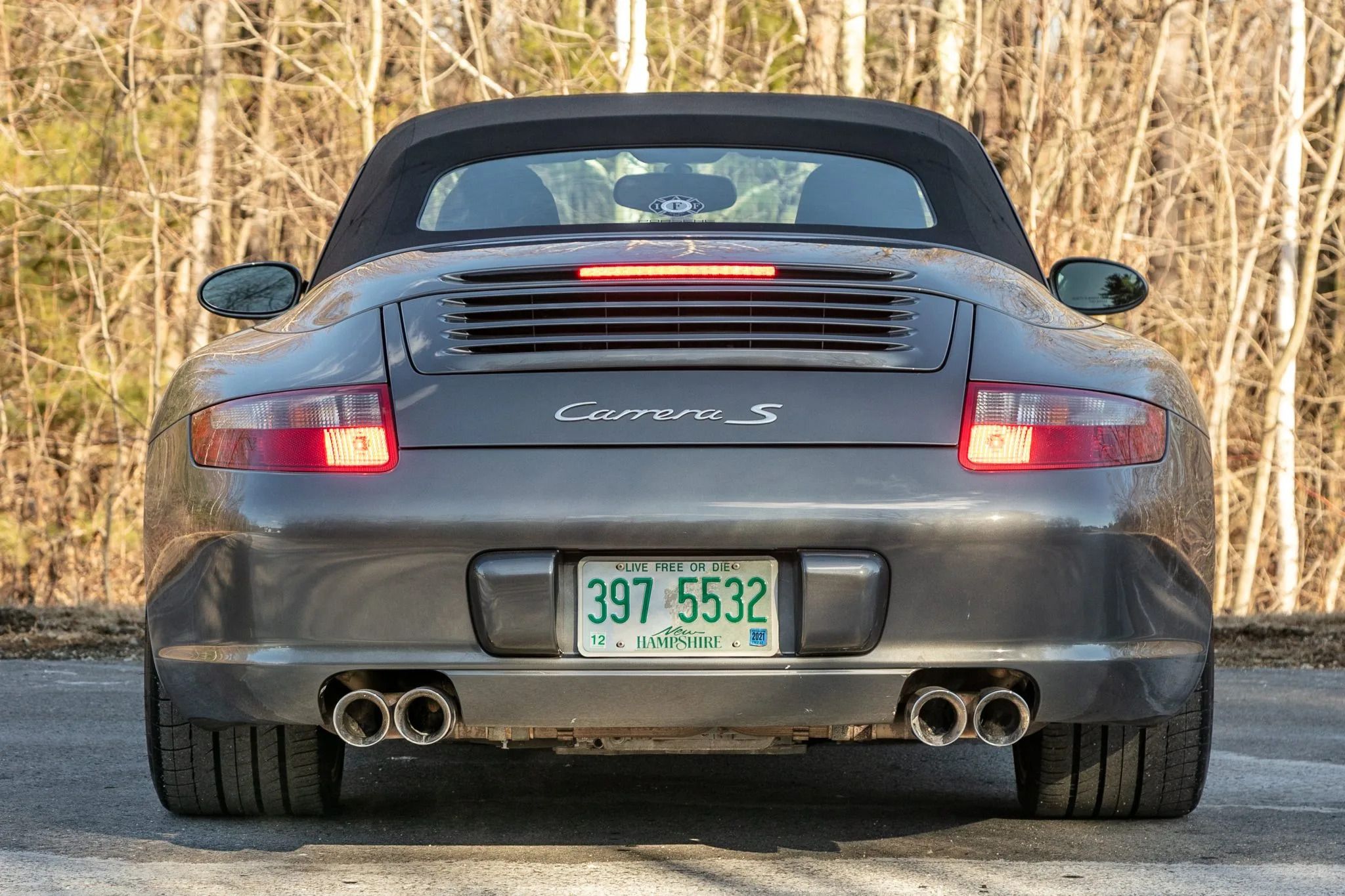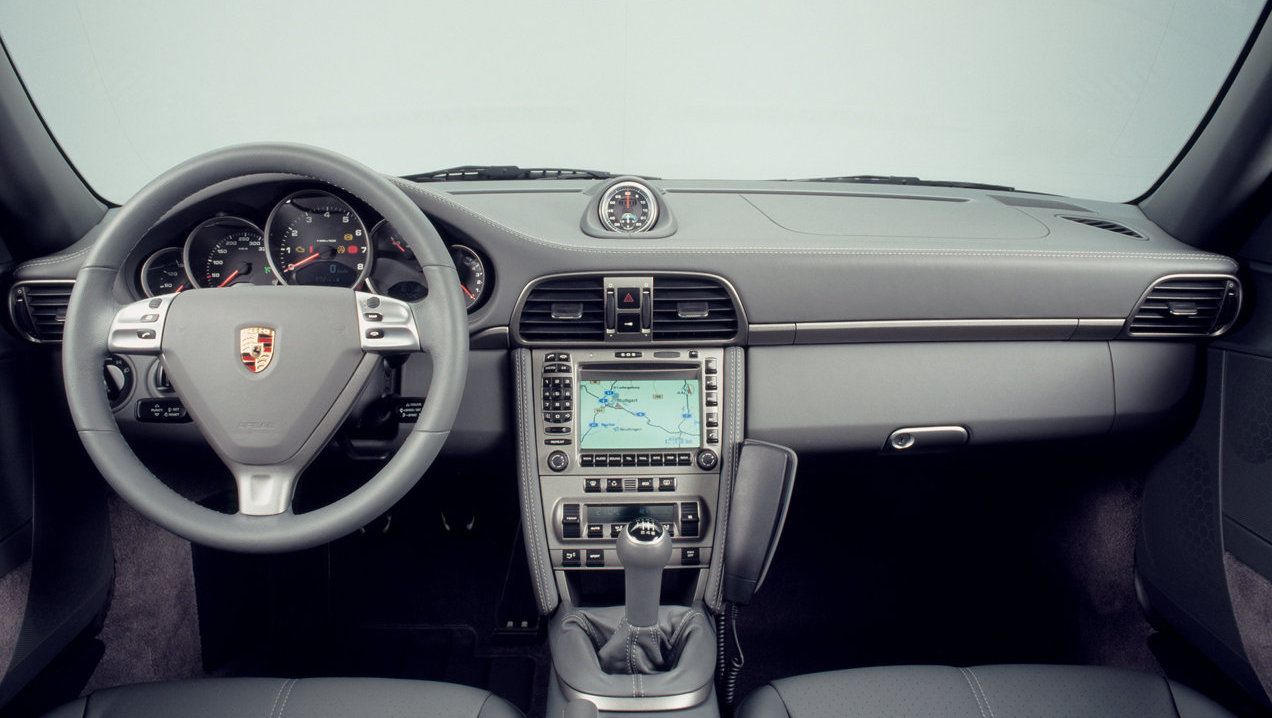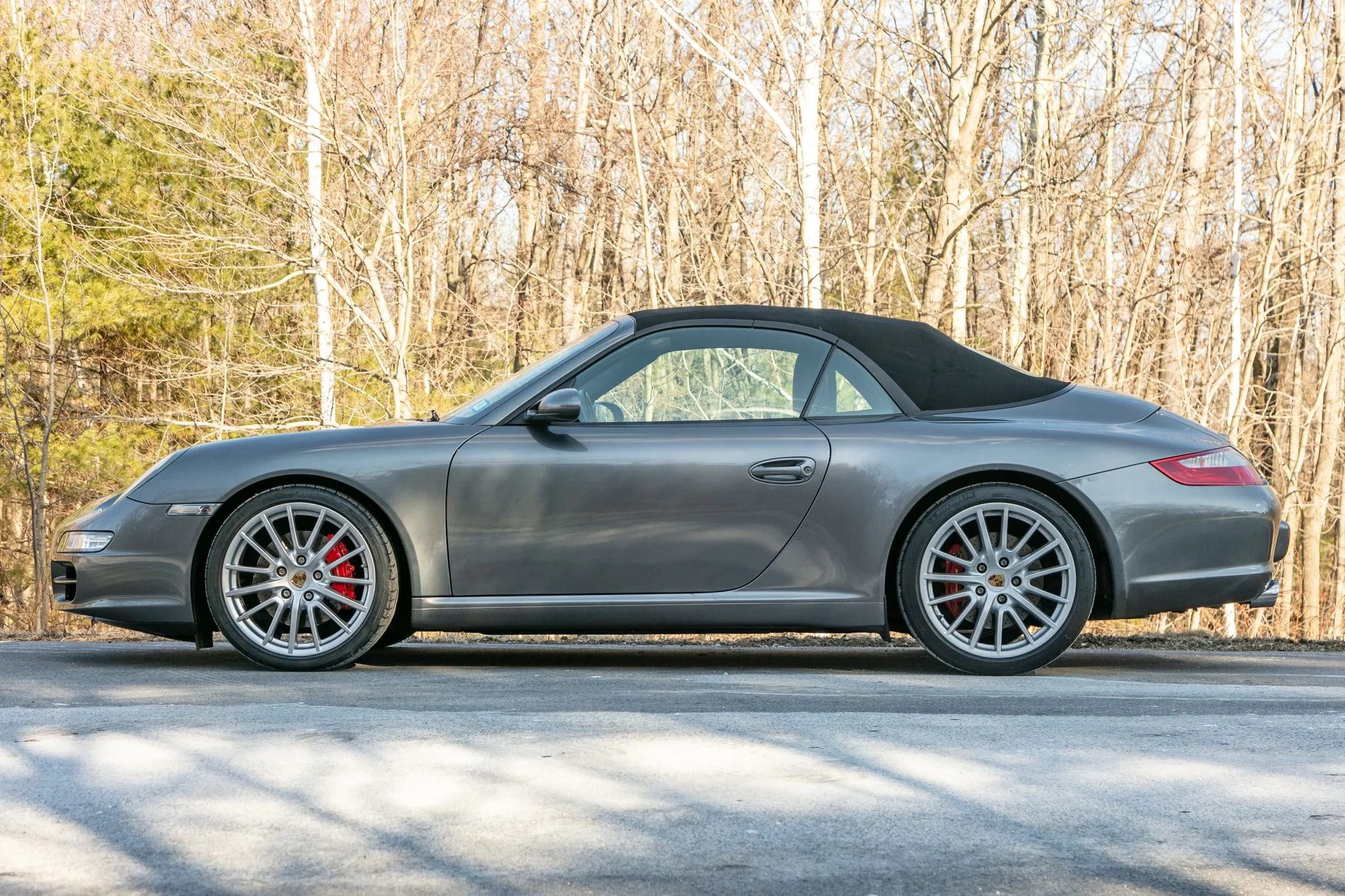The Porsche 911 is arguably one of the best sports cars of all time. The rear/mid-engine two-door 2+2 high-performance car has garnered a cult following since its release in 1964, and nearly 60 years later, still generates excitement with every new release.
Many enthusiasts consider the 997 generation, produced from 2005-2012, as the best of the overall Porsche 911 series. Porsche sold over 213,000 of the 997 units during the eight-year production span, making it a huge success.
For the enthusiast dreaming of owning a high-performance sports car, the 997 is a good choice because it competes well in performance and price with other cars in its class, such as the Chevrolet Corvette, Audi R8, and Nissan GT-R.
Today, buyers can easily find used Porsche 911 997 models for sale at affordable prices.
Porsche 911 Carrera 997
- Carrera S 0-60 mph acceleration in 4.0 seconds
- Porsche Doppel Kuplung (PDK) dual-clutch transmission
- On-demand AWD system
- Engine/Motor: 3.8-liter, flat-six/997.2 3.8-liter flat-six
- Horsepower: 350 hp/385 hp
- Torque: 300 lb-ft/311 lb-ft
- Drivetrain: RWD/AWD
- Transmission: six-speed manual transaxle/ seven-speed PDK dual-clutch transmission
- Direct fuel injection
- Affordable prices
- Available 6-speed manual transmission
- IMS Bearing Failure
- Engine Bore Scoring
Early And Later Porsche 997 Versions
Many Porsche devotees consider the 997 series as the last of the truly old-school 911s, making the generation desirable for collectors and enthusiasts alike.
The early Porsche 997.1 models included the 2005-2008 Carrera/S/4/4S, 2005-2008 Targa 4, 2008 Targa 4S, 2007-2009 Turbo and Turbo S, 2007-2008 GT3 and GT3 RS, and the 2008 GT2 and GT2 RS.
The second stage Porsche 997.2 models, made between 2009 and 2013, included the 2009-2012 Carrera/S/4/4S, 2010-2012 Carrera 4 GTS, 2009-2012 Targa 4/4s, 2009-2013 Turbo, 2010-2013 Turbo S, GT3, and 2010-2011 GT3 RS, 2012 GT3 RS 4.0, and 2011 GT2 RS.
Subtle differences in the body styles distinguish the two stages. The 997.1 models feature a sleeker design with smoother bumpers and smaller rear wings. An example is the "Taco" wing on the rear of early 997 GT3 models compared to the motorsport-derived spoiler on the 997.2 GT3.
The 997.2 Porsche 911 adopted LED lighting and taillights are slightly more rounded towards the decklid than the earlier models. The 997.2 Turbo and Turbo S models feature fog lights on the edges of the front fascia.
R
Direct Fuel Injection Implemented For The 997.2 Carrera
Porsche introduced the M97 engine with the 997.1 Carrera S and 4S models. The naturally aspirated 3.8-liter, flat-six produced 350 hp at 6,600 rpm and 300 lb-ft of torque at 4,600 rpm. The optional X51 power package included upgraded camshafts, high-flow cylinder heads, and a deeper oil sump with increased baffling, augmenting the output to 380 hp and 310 lb-ft.
Porsche made the move to direct fuel injection (DFI) for the second-generation 997.2 models, the most significant revision to the sports car's injection technology in 40 years. The new MA1.02 engine used for the 997.2 Carrera S/4S models proved to be significantly more reliable than the M96 and M97 powerplants found on 997.1 cars.
The 3.6-liter naturally aspirated flat-six generated 345 hp at 6,500 rpm and 289 lb-ft at 4,400 rpm, while the 3.8-liter flat-six produces 385 hp at 6,500 rpm and 311 lb-ft at 4,400 rpm. With the X51 power package (standard on the 997.2 Carrera GTS) the power output increases to 408 hp with the same torque.
On-Demand All-Wheel-Drive System
All Porsche 997.1 models came with either the six-speed manual transaxle or the traditional torque-converter five-speed Tiptronic S automatic (997.1 GT2 and GT3 versions came exclusively with a manual).
Porsche made some significant improvements for the 997.2 models. While the six-speed manual transaxle was still an option, the new seven-speed Porsche Doppel Kuplung (PDK) dual-clutch transmission allowed changing gears automatically or manually by the driver tapping shift paddles on the steering wheel.
While Porsche offered the 996 Carrera 4, 4S, and Turbo models with permanent all-wheel drive, the 997 variants featured an on-demand AWD system. The 911 uses rear-wheel-drive only until the system senses a slip. Then, a computer-controlled multi-plate clutch activates and sends power (from 5-40%) to the front wheels.
The 997-generation also introduced the Porsche Active Suspension Management (PASM) to optimize handling. The driver adjusts magnetic dampers by selecting a preferred drive mode: Comfort, Sport, or Race. PASM-equipped cars sit 10-20 mm lower than the standard 997.2 models, improving the car's aerodynamics.
Exceptional Performance In Typical Porsche Style
In typical Porsche style, the 997 Porsche 911 demonstrated remarkable performance. In 2005, the first phase 911 Carrera 997 accelerated from 0 to 60 mph in 4.7 seconds, reached the quarter mile in 13.9 seconds at 114 mph, and achieved a top speed of 177 mph.
A second phase 997 Carrera S accelerated to 60 mph in a blistering 4.0 seconds and reached the quarter mile in a mere 11.7 seconds on its way to a top speed of 188 mph.
As a comparison, the highest-performance RWD Porsche 911 997.2 GT3 RS 4.0-liter, featuring a naturally aspirated flat 6, produced 493 bhp and accelerated to 62 mph (100 kph) in 3.9 seconds on its way to a maximum speed of 193 mph.
Tradition Austere Porsche 911 Interior
In addition to introducing direct fuel injection and the PDK twin-clutch auto, the 997 Porsche added interior features including French-stitched heated and ventilated leather front seats (part of a $4825 leather package offered on the 2005 Carrera S), automatic climate control, cruise control, Bluetooth connectivity, and an extended navigation package.
In true Porsche tradition, the 997 models lean more toward track vehicles than luxury road cars with an interior that features hard and straight lines, firm and unyielding surfaces, and a low-shelf dash that conceals the airbags.
The Porsche 911 997 Is A Good Investment
Naturally aspirated, high-performance Porsche 911 997 models are appreciating, and most models sell for more than they did five years ago, making them a good investment.
New Porsche 997 Carrera models carried base prices in the range of $78,000 for the standard Carrera to $97,700 for the Carrera S Cabriolet. Today, 911s with reasonable mileage sell for a fraction of what they cost originally. A Porsche 997.1 Carrera sells for as low as $30,000 while a low-mileage 997 Carrera S sells in the $50,000 to $70,000 range.
However, a rare 997 GT3 RS 4.0 will set you back around $500,000.

